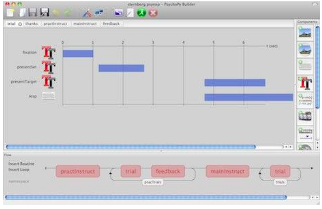

Specifies the physical screen that stimuli will appear on screen : 0, 1 (or higher if you have many screens) See Units for the window and stimuli for explanation of options. The monitor to be used during the experiment units : None, ‘height’ (of the window), ‘norm’ (normalised),ĭefines the default units of stimuli drawn in the window If None then PsychoPy will revert to user/site preferences monitor : None, string or a ~ object No buttons to close etc… winType : None, ‘pyglet’, ‘pygame’ If set to False, window will be drawn with no frame and Location of the window on the screen color : Ĭolor of background as list or single value.Įach gun can take values between -1 and 1 fullscr : None, True or Falseīetter timing can be achieved in full-screen mode allowGUI : None, True or False (if None prefs are used) Size of the window in pixels (X,Y) pos : None or (x,y) See further downįor a list of attributes which can be changed after initialization These attributes can only be set at initialization. Project (we won’t be fixing pygame-specific bugs).

Pygame may still work for you but it’s officially deprecated in this To specify which screen to use (if more than one is available, duh!) and
#PSYCHOPY PYGLET VS PYGAME TIMING WINDOWS#
The pyglet backend allows multiple windows to be created, allows the user Used to set up a context in which to draw objects,

Window ( size=(800, 600), pos=None, color=(0, 0, 0), colorSpace='rgb', rgb=None, dkl=None, lms=None, fullscr=None, allowGUI=None, monitor=None, bitsMode=None, winType=None, units=None, gamma=None, blendMode='avg', screen=0, viewScale=None, viewPos=None, viewOri=0.0, waitBlanking=True, allowStencil=False, multiSample=False, numSamples=2, stereo=False, name='window1', checkTiming=True, useFBO=False, useRetina=True, autoLog=True, *args, **kwargs ) ¶


 0 kommentar(er)
0 kommentar(er)
